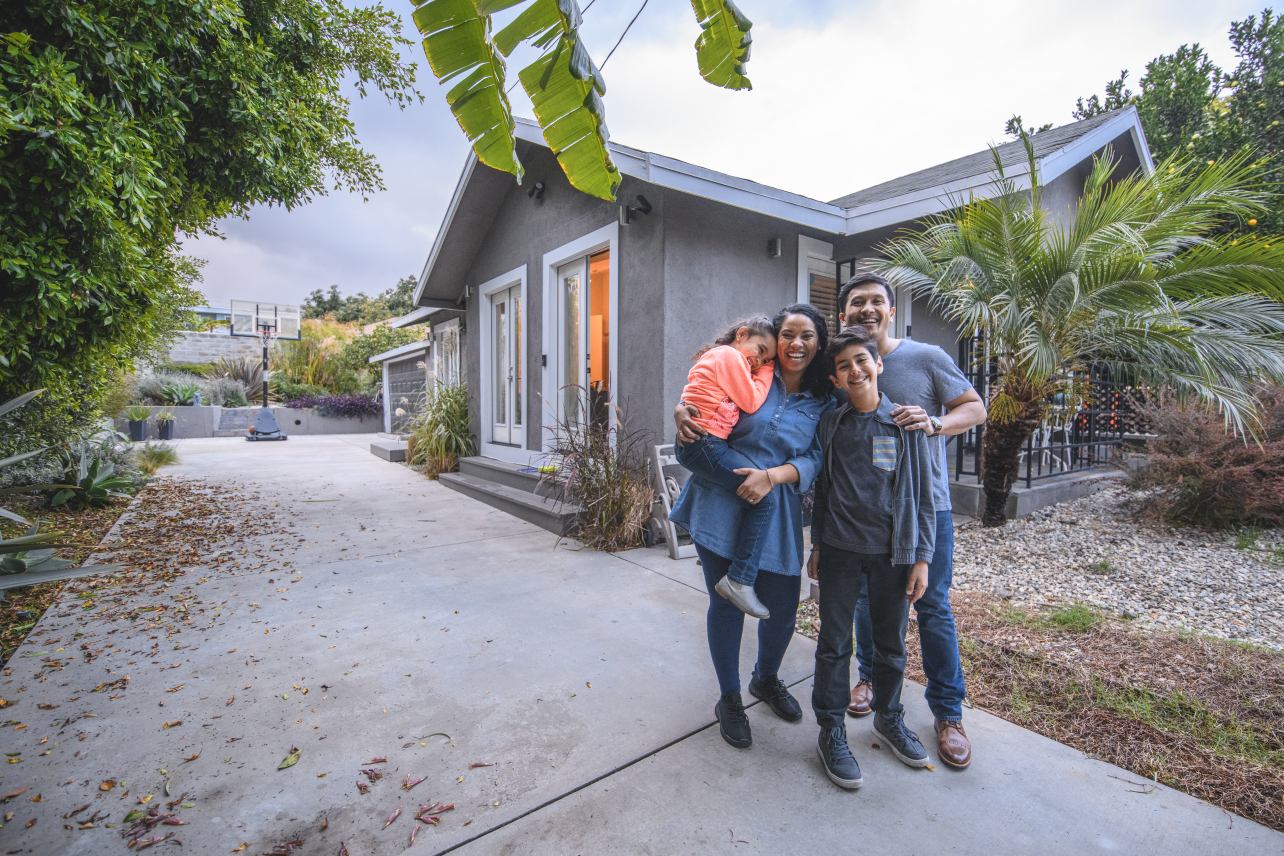When it comes to figuring out how much home you can afford, the listing price of a home isn’t necessarily equal to the total cost of homeownership. If you’re like most people and get a mortgage, you’ll end up paying a little more than the listing price at the end of your mortgage due to interest rates.
There are other costs aside from the listing price and mortgage monthly payments included in buying a home. Working these into your budget can help you avoid surprises and set realistic expectations so you go into the homebuying process with confidence. There are one-time costs and ongoing costs that impact your overall monthly budget and how much you’ll need to save initially. Let’s break all of the costs down to figure out how much money you really need to save to buy a house.

Ongoing expenses
Costs that persist over time once you become a homeowner
Property taxes
Property taxes vary by state and county and are usually included in your monthly mortgage payment. Property taxes can fluctuate depending on your home’s value (if you’ve upgraded anything, renovated, etc.) or if home prices in your area change. Talk to a lender or real estate agent to get an idea of property taxes in your desired area.
Insurance
You’ll have to pay several different types of insurance on your new home. The first is homeowners insurance which protects you against most natural occurring disasters and other perils. Check out our article, Homeowners Insurance 101: What you need to know to get a deeper understanding of homeowner’s insurance. The average cost of homeowners insurance in the U.S. is $1,600 a year, according to the National Association of Insurance Commissioners. That would divide out to approximately $133 a month to include in your budget.
The second type of insurance you’ll need is mortgage insurance, which protects the lender and is required if you make a down payment of less than 20%. Private mortgage insurance (PMI) can be up to 2% of your total loan amount and is also included in your monthly payment plan. To learn more about PMI, read our article, Private Mortgage Insurance: Got It? Need It? What Is It?. Once you’ve paid down between 75-80% of your total mortgage loan, PMI can be eliminated.
Homeowner’s Association/Condo/Co-Op fees
If you’re buying a home or condo in a complex or shared space, you’ll probably have to pay Homeowners Association (HOA) fees. This covers things like painting, fence repair, landscaping, shared amenities, or improvements that will benefit the entire complex.
Depending on the community, HOA fees may be monthly, quarterly, or annually and you will have to budget accordingly. The amount depends on the location, but can range from $50 to thousands of dollars per month.
Utilities
Utilities will be a monthly expense that you may be used to as a renter. But owning a home comes with a little more responsibility than water, gas, and electricity bills. Especially if you’re used to renting where the landlord covers a portion of your utilities. As a homeowner, you’re covering everything from electricity, water, gas, internet, on top of other things like yard or pool maintenance.
The above costs you’ll want to work into your monthly budget. But incidents like the water heater or washing machine dying will be unexpected expenses that will pop up along the way. And that’s where things like an emergency fund come in handy! So you don’t have to worry about disrupting your monthly budget or going into debt.
Mortgage payments
Of course, if you get a mortgage for your new home, you’ll be making monthly mortgage payments to pay off the loan over time. The type of mortgage you get will depend on your financial situation like credit score, capital available for down payment, etc. To calculate your mortgage payment, click here.
Unlike a lot of the other costs listed in this article, mortgages are one of the more predictable homebuying expenses. Easily flesh out a monthly estimate with our Mortgage Calculator Tool by plugging in a few pieces of financial information.
Consider the other costs mentioned above to work backwards in determining how much home you can actually afford. You may budget for $3200 a month, but after factoring in the other monthly expenses, your actual allotment for a mortgage payment will probably be less than that. Use this information to determine a realistic price range for your home search.
One-time homebuying expenses
Costs you’ll only have to cover once, at the time of home purchase
Down payment
The down payment is the portion of the home’s listing price that you will pay up front. It will be anywhere from 1-20%, or more depending on how much you have saved and what kind of mortgage you get. If you get a conventional or FHA loan, a down payment is required. The amount of down payment needed is dependent on the home’s listing price, property type, and loan terms.
Down payments are such a big portion of what you need to buy a home initially, and therefore will be a large part of your preemptive savings plan vs budgeting for monthly maintenance once you’ve become a homeowner. If you’ve been saving for a while, and already have a down payment savings account, you can determine how much longer you need to save. If you’re just starting to think about a down payment, consider how much you can save per month right now and create a timeline. For example, if you can put away $1000 per month right now, you’ll have $24,000 (or more if you put it in a high-yield savings account) to put down on a home. This is something a lot of people don’t realize - you need to start saving early, or save more per month, if you’re looking to buy a home sooner and aren’t that far along in your savings plan yet.
Closing costs
Closings costs are processing fees from your lender that come up at the end of your homebuying journey, when you finally close on a home. Learn more about the closing process in our previous article. Think of them as operation or labor fees, as if you were going to a mechanic. They generally cover: the application fee, appraisal fee, credit check fee, origination and/or underwriting fees, title insurance, and transfer tax if applicable.
Closing cost amounts vary depending on your home, location, loan type, and can sometimes be negotiated to be covered in part or in full by the home seller. They generally range from 2-5% of the loan principal. Talk to your lender about closing costs at the beginning of your home search to discuss your options.
Saving for a home is not just determining your mortgage monthly payment. You need to factor in insurance, maintenance, and association fees to really understand the cost of being a homeowner. Saving up to buy a home includes your down payment and closing costs. It’s best to think about preparing to buy a home with these two savings “buckets” in mind. Make a sheet and start doing research in your area and estimating these costs so you can get a better idea of how close you are to becoming eligible to be a homeowner! If you have any questions or want to discuss your financial profile and options, give us a call.



